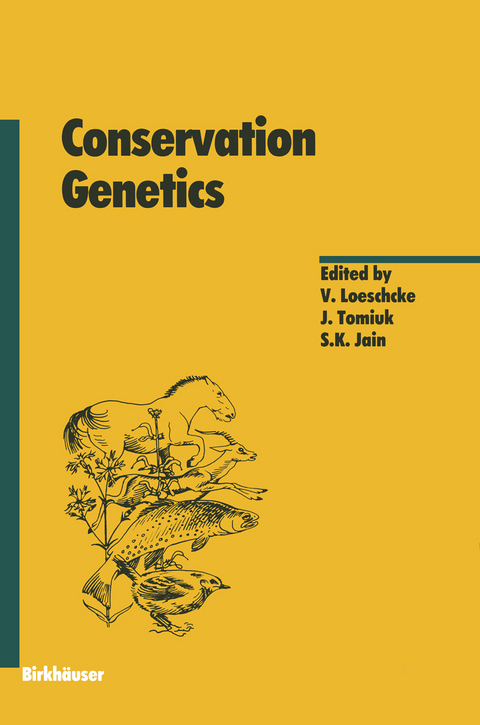
Conservation Genetics
Springer Basel (Verlag)
978-3-0348-9657-3 (ISBN)
I: Genetics and conservation biology.- Introductory remarks: Genetics and conservation biology.- Global issues of genetic diversity.- II: Genetic variation and fitness.- Introductory remarks.- Genetic variation and fitness: Conservation lessons from pines.- Genetic diversity and fitness in small populations.- Mutation load depending on variance in reproductive success and mating system.- Extinction risk by mutational meltdown: Synergistic effects between population regulation and genetic drift.- III: Inbreeding, population and social structure.- Introductory remarks.- Inbreeding: One word, several meanings, much confusion.- The genetic structure of metapopulations and conservation biology.- Effects of inbreeding in small plant populations: Expectations and implications for conservation.- The interaction of inbreeding depression and environmental stochasticity in the risk of extinction of small populations.- Genetic structure of a population with social structure and migration.- Guidelines in conservation genetics and the use of the population cage experiments with butterflies to investigate the effects of genetic drift and inbreeding.- IV: Molecular approaches to conservation.- Introductory remarks.- Rare alleles, MHC and captive breeding.- Andean tapaculos of the genus Scytalopus (Aves, Rhinocryptidae): A study of speciation using DNA sequence data.- Genetic distances and the setting of conservation priorities.- Multi-species risk analysis, species evaluation and biodiversity conservation.- V: Case studies.- Introductory remarks.- On genetic erosion and population extinction in plants: A case study in Scabiosa columbaria and Salvia pratensis.- Effects of releasing hatchery-reared brown trout to wild trout populations.- Genetics and demography of rare plants and patchily distributed colonizing species.- Response to environmental change: Genetic variation and fitness in Drosophila buzzatii following temperature stress.- Alternative life histories and genetic conservation.- The principles of population monitoring for conservation genetics.- VI: Genetic resource conservation.- Introductory remarks.- Optimal sampling strategies for core collections of plant genetic resources.- Conservation genetics and the role of botanical gardens.- Animal breeding and conservation genetics.- Scenarios.- Introductory remarks.- A: The genetic monitoring of primate populations for their conservation.- B: Heavy metal tolerance, plant evolution and restoration ecology.- C: Genetic conservation and plant agriculture.- D: Fragmented plant populations and their lost interactions.- E: Host-pathogen coevolution under in situ conservation.- Concluding remarks.
| Erscheint lt. Verlag | 30.10.2012 |
|---|---|
| Reihe/Serie | Experientia Supplementum |
| Zusatzinfo | X, 443 p. |
| Verlagsort | Basel |
| Sprache | englisch |
| Gewicht | 780 g |
| Themenwelt | Naturwissenschaften ► Biologie ► Botanik |
| Naturwissenschaften ► Biologie ► Genetik / Molekularbiologie | |
| Naturwissenschaften ► Biologie ► Zoologie | |
| Technik ► Umwelttechnik / Biotechnologie | |
| Schlagworte | Behavior • Biology • Genetic Engineering • Genetic Information • Genetics • Population |
| ISBN-10 | 3-0348-9657-3 / 3034896573 |
| ISBN-13 | 978-3-0348-9657-3 / 9783034896573 |
| Zustand | Neuware |
| Haben Sie eine Frage zum Produkt? |
aus dem Bereich


